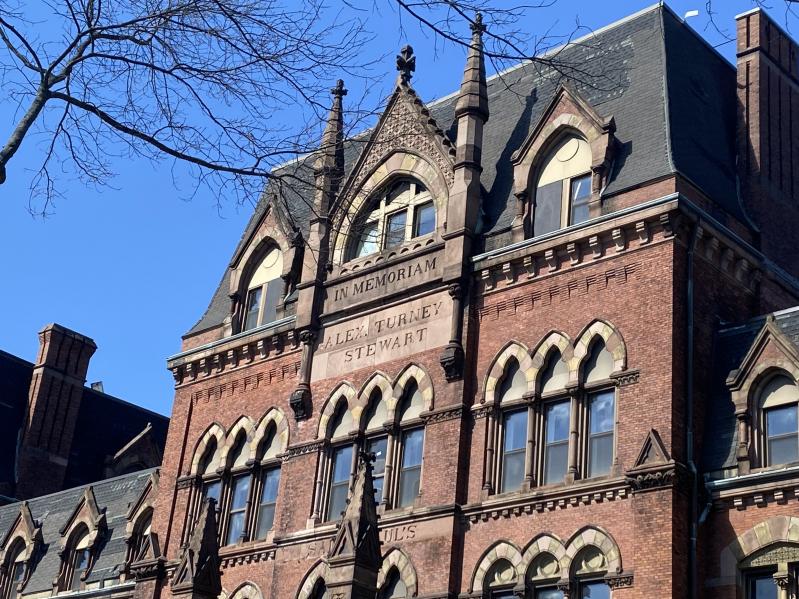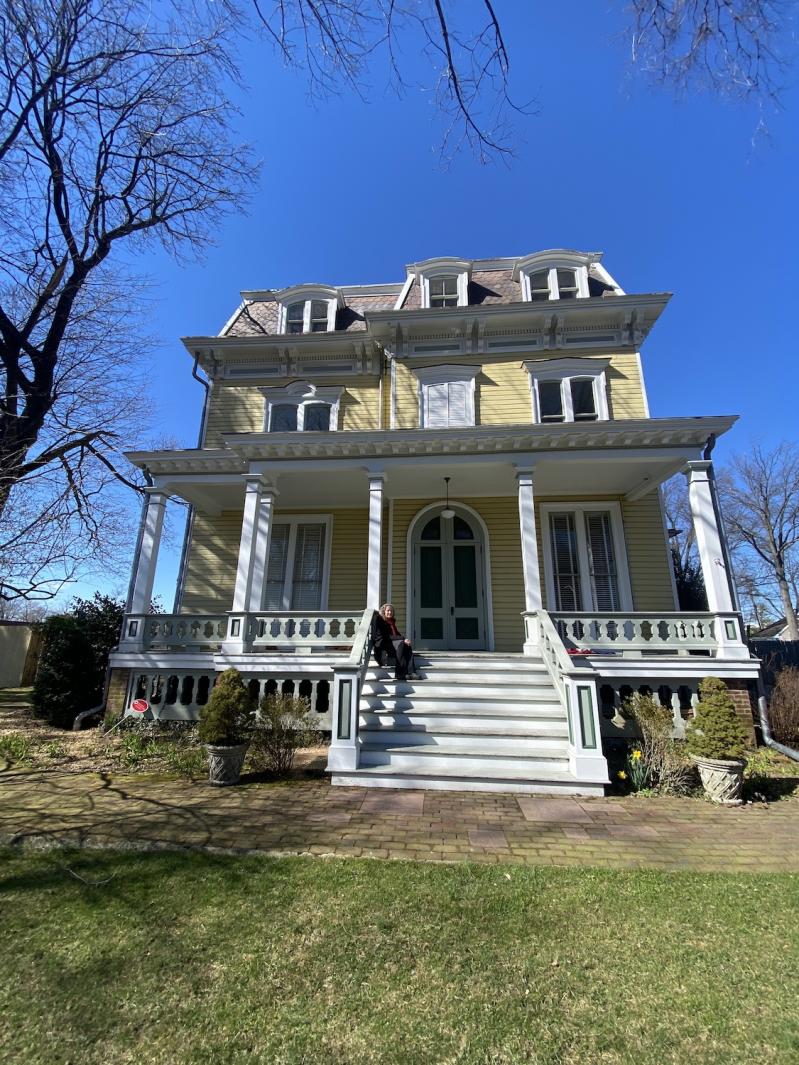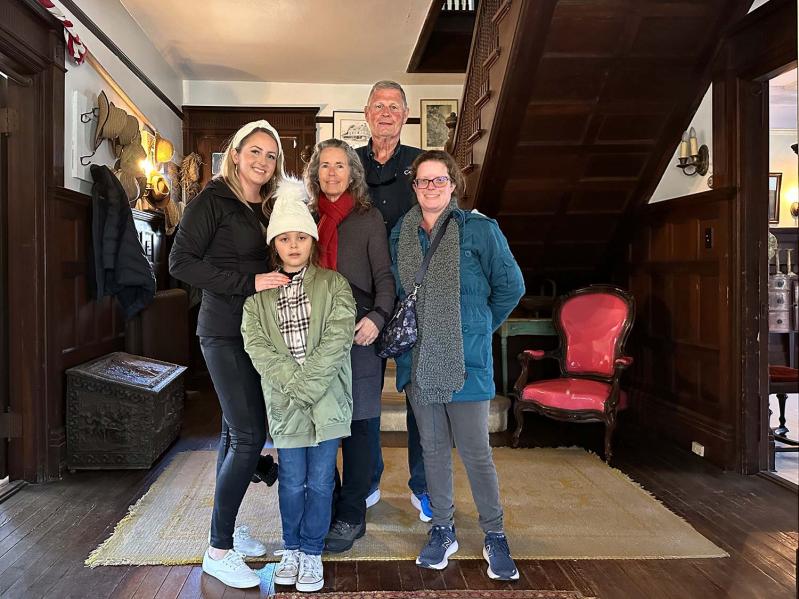A lifelong California resident, Michele L’Hommedieu Hofmann had never been to New York until last week, and until retiring last fall and starting to research her family history, she had no idea how prominent a role her great-great-grandfather James H. L’Hommedieu had played in Long Island’s late-19th-century architecture.
On a trip to New York that included a stop on Friday at an East Hampton house he designed for Robert Southgate Bowne, a founder of the Maidstone Club and first president of the Long Island Rail Road, Ms. Hofmann and her family got a crash course in L’Hommedieu’s work.
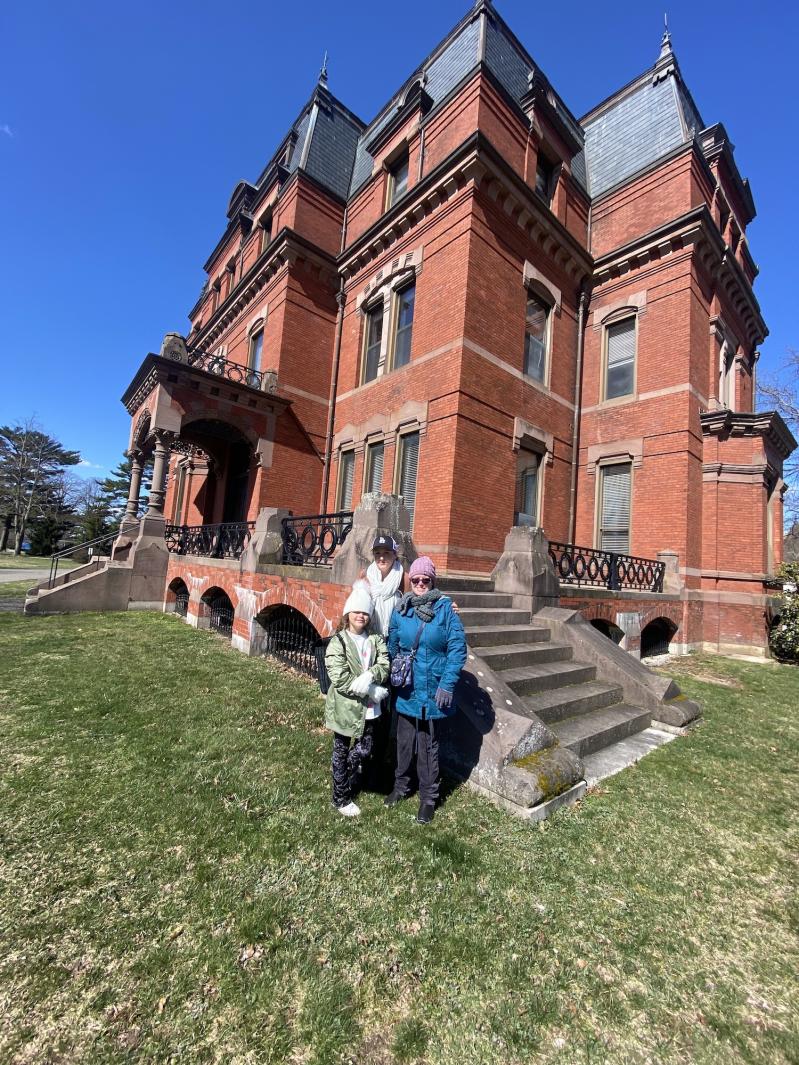
Her great-great-grandfather designed virtually all of Garden City, one of the country’s first planned villages, starting in the late 1870s. As part of this trip, the Hofmann family visited many of those original Garden City buildings, including the Cathedral of the Incarnation and St. Paul’s School, which has been closed for many years.
L’Hommedieu is credited with two houses, or “cottages” as they were called, in the Ocean Avenue Historic District in East Hampton’s summer colony, one at 4 Pudding Hill Lane — the James Gallatin House — and another at 32 Ocean Avenue, which is listed now with Brown Harris Stevens for $9.995 million. It was that listing, which Ms. Hofmann noticed last fall, that prompted her visit to East Hampton, where the brokers Elizabeth Wohl and James J. MacMillan offered the family, including her husband, their two daughters, and a granddaughter, a special tour. The Bowne house is the only residence designed by her great-great-grandfather that she has seen inside.
“It kind of seemed like a dream when we were planning our trip,” she said.
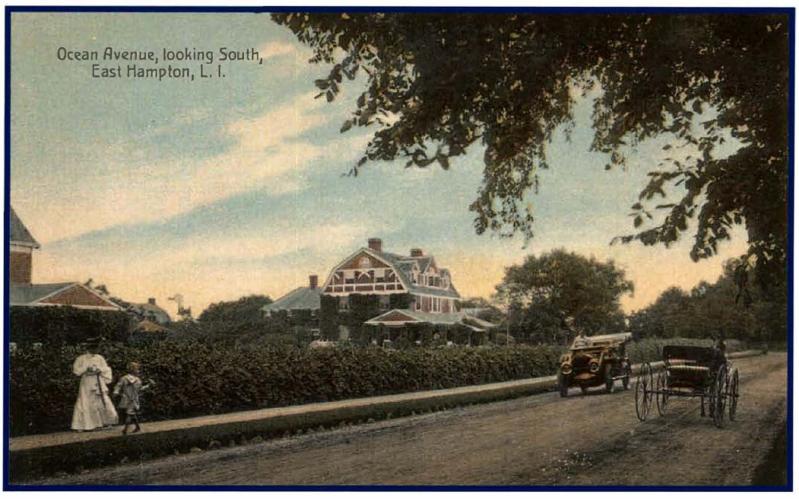
Completed in 1889, the Shingle Style house has 7,100 square feet spread over three stories, with 12 bedrooms, many of them very small, eight and a half bathrooms, a billiard room, and nine fireplaces.
L’Hommedieu died just three years after construction was complete. Bowne died at the house in 1896 at the age of 54.
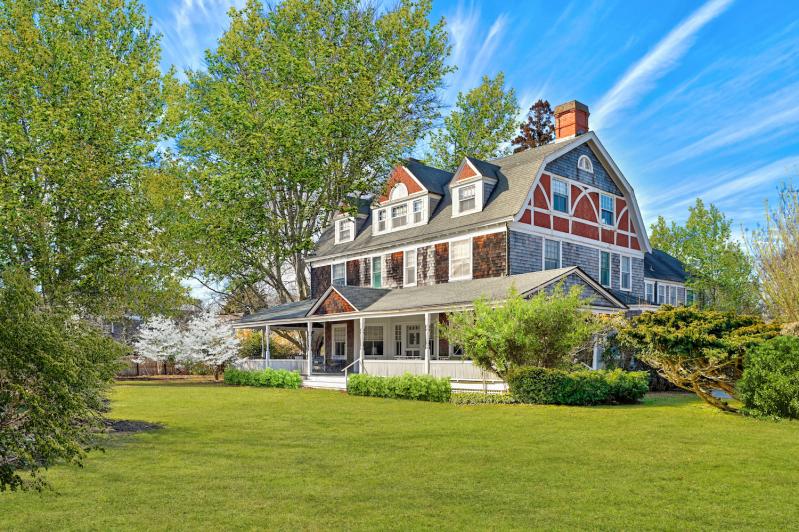
In the 1890s, The Star would often report on who had arrived for the summer or who was visiting whom and at what houses, Social Register-style. In a July 1892 article, the paper gushed about “the beautiful residences” of Gallatin and Bowne, saying they “present the most artistic floral displays of any we have seen. The broad piazzas are almost hidden by the sweet honey-suckle, the lawns, faultlessly kept, and bordered with pretty foliage and with no hideous division fence between to mar the beauty of the broad expanse of green, the scene is one which all passers-by admire.”
“It was a big social-event house back in the day,” Mr. MacMillan said, while standing near the ornate main stairway, in view of the billiard room. “Dustin Hoffman played pool at that pool table while Barbra Streisand gave a speech for Bella Abzug on the steps.”
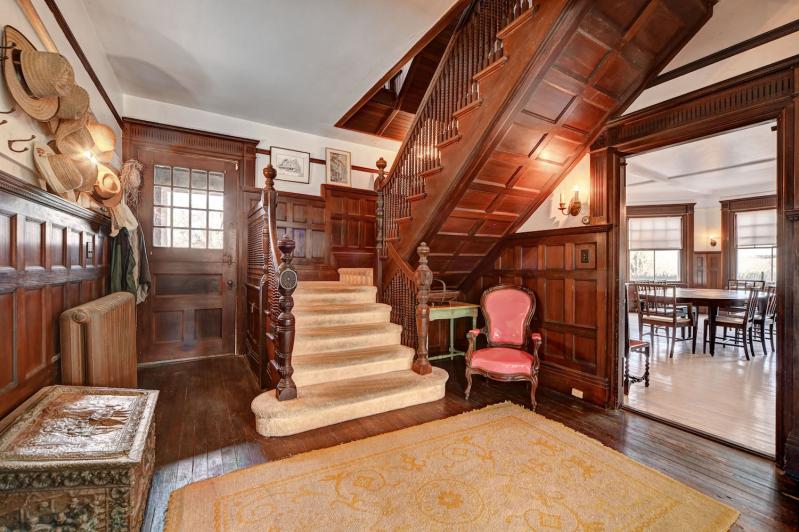
The Bowne house has had just three owners in its nearly 135 years, and unlike almost every neighboring house in the village’s estate section, it has barely been altered since it was built. “A lot of the original details of the house are still there,” Ms. Wohl said. “They haven’t been renovated away — the paneling and the box-beam ceilings, and all of those little touches.”
“This is about as true to original as you’re going to find,” Ms. Hofmann said, after having had the chance to explore all three stories.
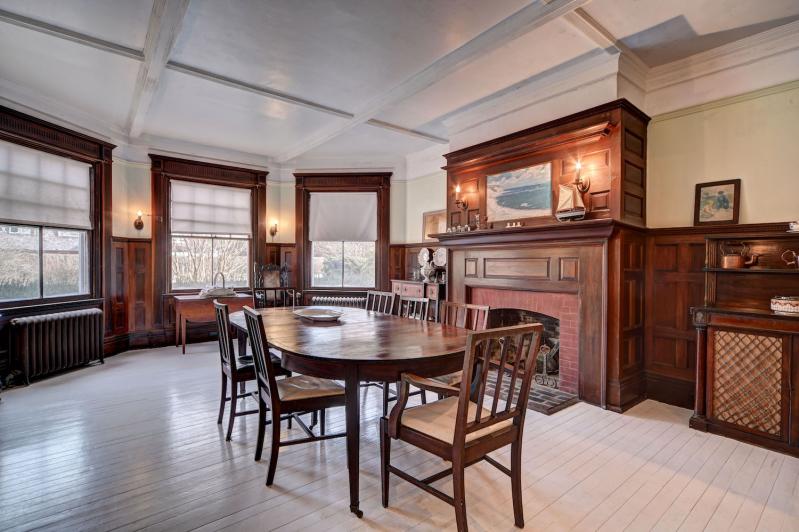
The house’s greatest charms are also its greatest challenges. It is one of 15 houses in the Ocean Avenue Historic District; its facade is protected and cannot be torn down.
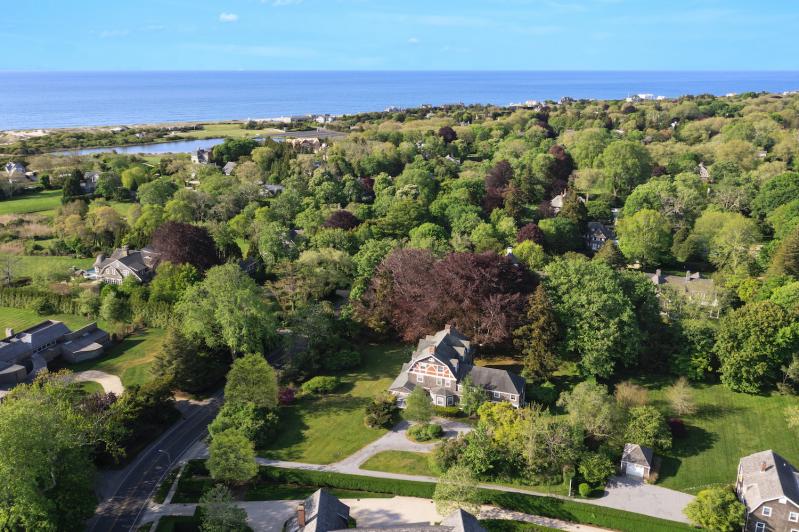
The house first came on the market over a year ago at $11.5 million. “We had a nice number of people look at the house, but what we started to see was with the cost to renovate, the original listing price was too high,” said Ms. Wohl. “Some buyers are put off by the renovation.” It was relisted in January at the lower price.
The family that owns it now, three siblings who inherited it from parents who had purchased it in the 1960s, have continued to use it in the summer. “When they’re there and they all bring their children, there are just so many bedrooms and so many places to hang out,” Ms. Wohl said. A modern-day buyer, however, will want many amenities that the house simply does not have — central air, for one.
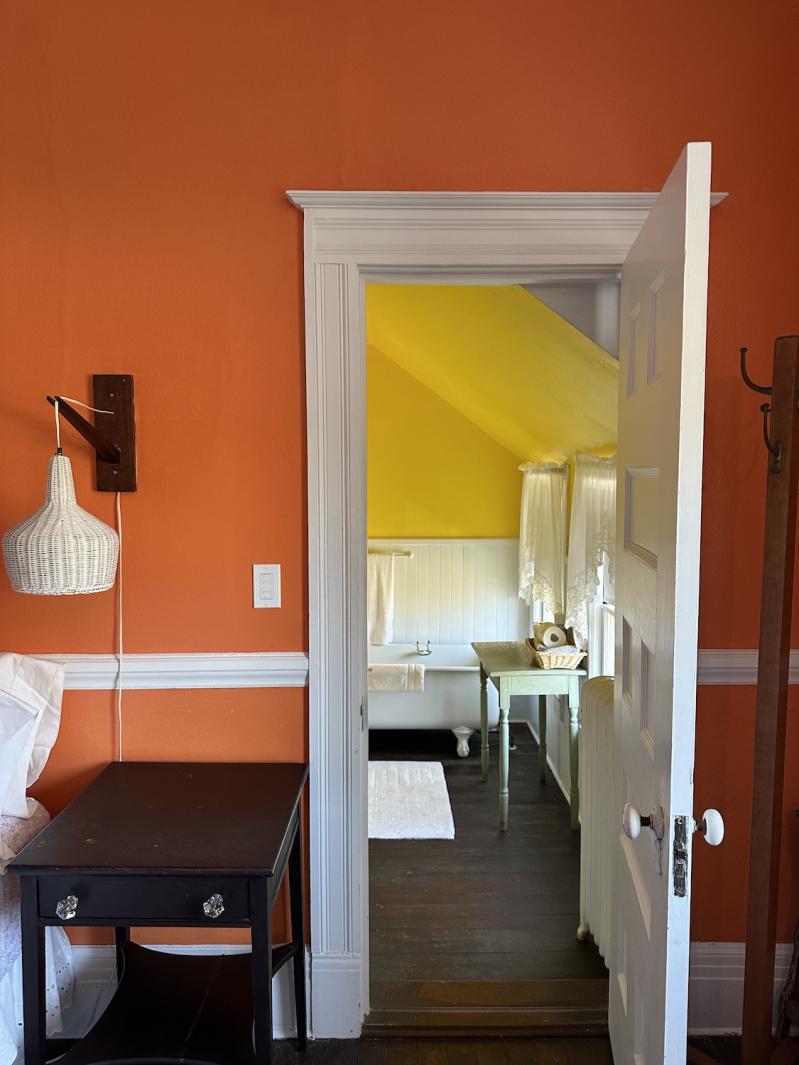
But there are lots of pluses, too, that even someone less enchanted by its history can appreciate. “It is well over the size that would be permitted here right now,” Mr. MacMillan noted. (And that third story wouldn’t be allowed either, under today’s code.)
His advice for a potential buyer: “You shouldn’t knock down anything, because they’ll never let you have this footprint.”
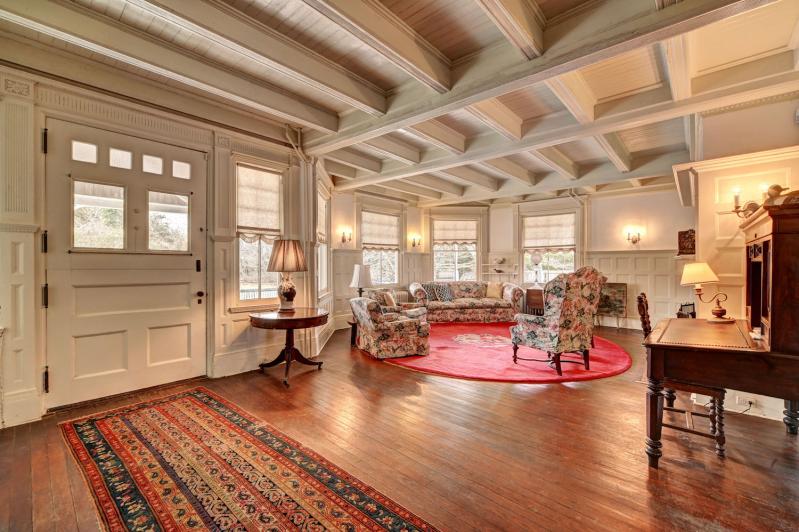
People are taken with “the original details, the paneling and the beamed ceilings and such,” said Ms. Wohl. “The fact that there are so many original things about the house, the fact that the ceilings are so high on all the floors — that surprises people.”
